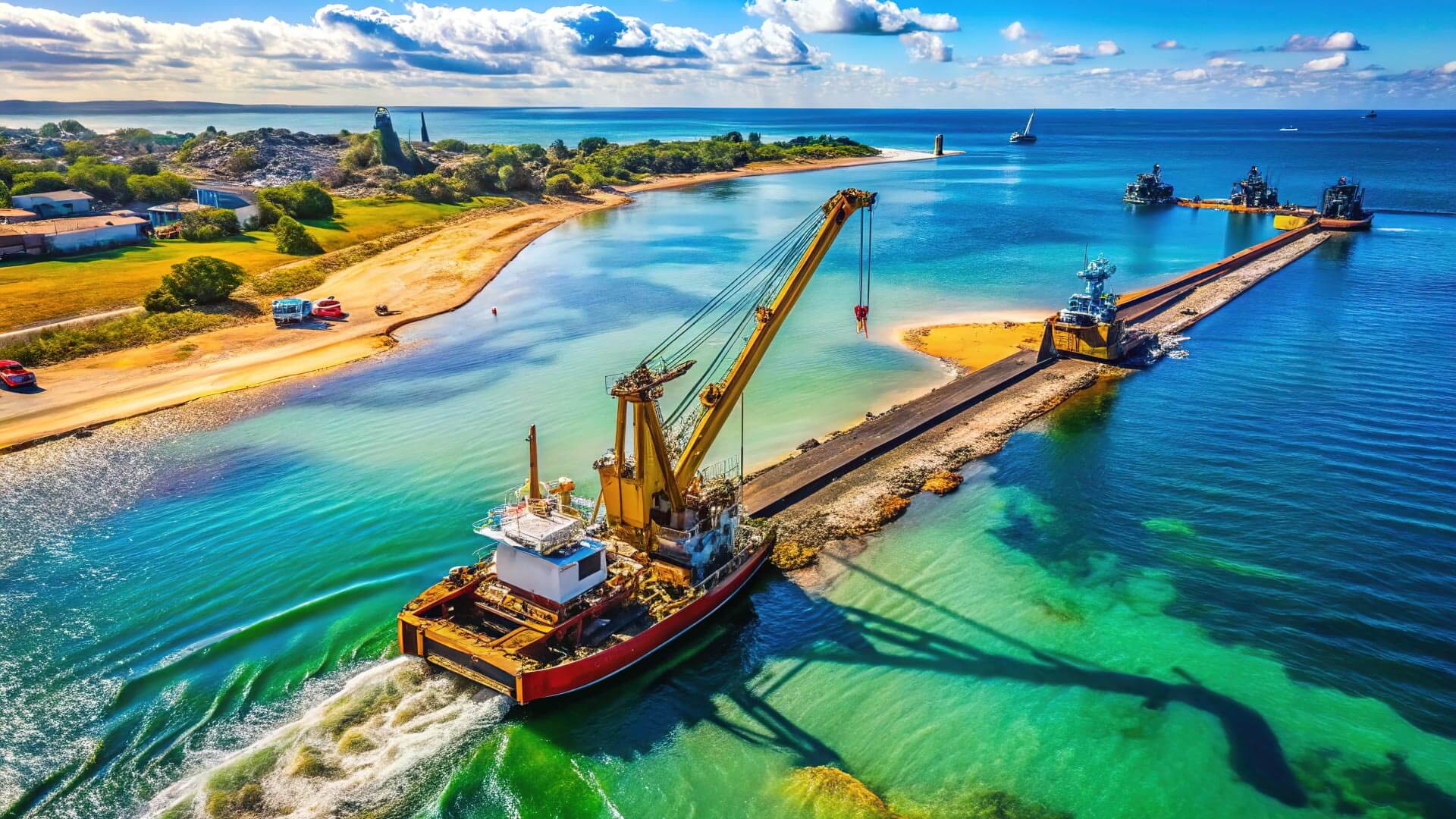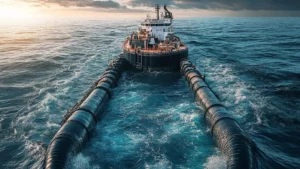Ports are the lifelines of global trade, serving as critical hubs for transporting goods and resources across continents. Their efficient operation is vital to sustaining the global economy and ensuring environmental balance. However, maintaining and expanding port infrastructure requires continuous management to address sediment buildup, navigational challenges, and ecological concerns. This is where marine dredging becomes indispensable.
Marine dredging involves removing sediment, debris, and other materials from the seabed to deepen and maintain navigational channels, enhance port facilities, and support environmental initiatives. By ensuring that ports remain functional and efficient, marine dredging plays a key role in facilitating the smooth flow of maritime trade while also addressing environmental management needs.
The process is not only about infrastructure improvement but also about ecological stewardship. Projects that dredge harbor marine environments often integrate strategies to repurpose dredged material for habitat restoration or shoreline stabilization. This dual focus on development and sustainability makes marine dredging a critical tool for modern port management.
In this blog, we will explore marine dredging’s role in port infrastructure development, its environmental benefits, and the challenges it addresses. We’ll also delve into innovative technologies and future trends shaping this essential industry practice.
Understanding Marine Dredging

Marine dredging is the process of removing sediment, debris, and other materials from the seabed to maintain or deepen navigational channels, harbors, and coastal areas. This practice is essential for ensuring the smooth operation of ports, allowing large vessels to dock safely and efficiently. Beyond its role in infrastructure, marine dredging also supports environmental restoration by repurposing dredged material for habitat creation and shoreline stabilization.
The methods and equipment used in marine dredging vary based on the project’s requirements. Two primary methods are mechanical dredging and hydraulic dredging. Mechanical dredging involves using equipment like clamshell buckets or backhoes to scoop and remove sediment. This technique is ideal for precise operations in smaller areas. Hydraulic dredging, on the other hand, uses suction to remove sediment, which is then transported through pipelines to designated disposal or reuse sites. Cutter suction dredgers and trailing suction hopper dredgers are commonly used for large-scale marine dredging projects, especially in ports.
Marine dredging differs from other types of dredging due to its specific focus on maintaining and expanding ports and coastal infrastructure. While other dredging practices might target inland waterways or land reclamation, projects to dredge harbor marine environments prioritize navigational safety, port efficiency, and environmental balance. This unique emphasis requires specialized equipment and expertise to address the complex demands of marine environments.
In addition to infrastructure benefits, projects to dredge harbor marine areas often align with ecological goals, such as creating artificial reefs or restoring wetlands using dredged material. These combined efforts make marine dredging a vital practice for both economic and environmental sustainability, ensuring that ports can adapt to the evolving needs of global trade and ecological preservation.
The Role of Marine Dredging in Port Infrastructure Development
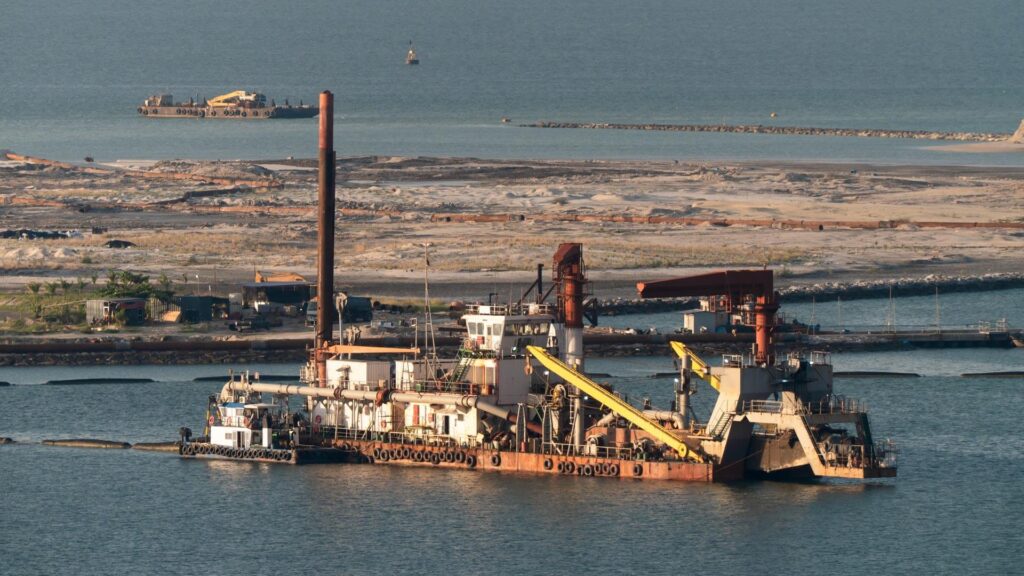
Marine dredging plays a vital role in the development and maintenance of port infrastructure, ensuring that ports remain capable of supporting global trade demands. One of its primary applications is deepening navigation channels to accommodate larger vessels. As global shipping trends shift toward mega-ships with greater cargo capacities, ports must adapt by creating deeper and wider access channels. Marine dredging enables this expansion, allowing ports to remain competitive in the international market.
Maintenance dredging is another critical aspect of port operations. Over time, sediment accumulation in harbors and channels can obstruct navigation and reduce the efficiency of port activities. Marine dredging removes this sediment, restoring the original depth of waterways and ensuring the safe passage of vessels. Regular maintenance dredging is essential for minimizing downtime, preventing accidents, and maintaining the overall functionality of ports.
Case studies highlight the transformative impact of projects that dredge harbor marine environments. For instance, the Port of Rotterdam underwent an extensive marine dredging initiative to deepen its channels and expand its capacity, enabling it to handle the world’s largest cargo ships. Similarly, the Port of Singapore has implemented regular maintenance dredging to maintain its position as a leading global hub. These projects demonstrate the critical role of marine dredging in sustaining and advancing port infrastructure.
By enabling the construction and maintenance of modern port facilities, projects to dredge harbor marine areas are integral to supporting global trade and economic growth. Marine dredging ensures that ports remain safe, efficient, and capable of meeting the demands of an ever-evolving maritime industry while balancing environmental and operational priorities.
Environmental Benefits of Marine Dredging
Marine dredging provides significant environmental benefits by addressing sediment buildup that can disrupt aquatic ecosystems. Over time, sediment accumulation in harbors and coastal areas can lead to poor water quality, reduced biodiversity, and compromised habitats for marine species. By removing excess sediment, marine dredging helps restore natural water flow, improve water clarity, and maintain the health of aquatic ecosystems. This process is vital for preventing further degradation of marine environments.
An additional benefit of marine dredging is the opportunity to repurpose dredged material for habitat restoration and shoreline stabilization. Sediment removed during dredging can be used to create wetlands, restore eroded coastlines, or construct artificial reefs, which support marine life and enhance ecological diversity. For example, projects to dredge harbor marine areas have successfully utilized sediment for building protective barriers against coastal erosion, benefiting both the environment and nearby communities.
Balancing port development with ecological preservation is a critical aspect of marine dredging. While the primary goal is to enhance port functionality, modern dredging practices prioritize sustainability. Advanced techniques and equipment are designed to minimize environmental impact, ensuring that ecosystems remain protected throughout the process. Projects to dredge harbor marine environments often incorporate monitoring and mitigation strategies, ensuring that marine dredging supports both economic and ecological objectives.
By addressing sediment issues, supporting habitat restoration, and integrating sustainable practices, marine dredging demonstrates its value not only as a tool for port development but also as a contributor to environmental preservation. These efforts ensure that marine dredging benefits both human industries and the natural ecosystems that sustain them, striking a balance between progress and ecological responsibility.
Challenges in Marine Dredging Projects
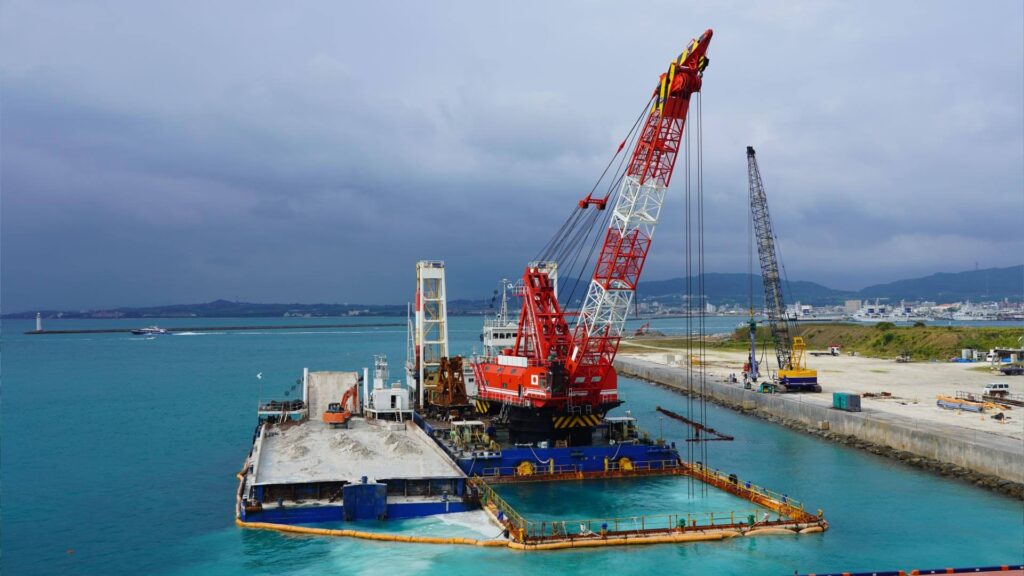
Marine dredging projects face several challenges that must be carefully managed to ensure successful outcomes. One of the most significant issues involves environmental concerns. Dredging can disrupt aquatic habitats, increase turbidity in the water, and potentially release pollutants trapped in sediment. Addressing these challenges requires adopting sustainable practices and using advanced equipment to minimize ecological impact. Regulatory hurdles also add complexity, as projects must comply with strict environmental guidelines and secure necessary permits, which can delay timelines or increase costs.
Logistical complexities are another common challenge in marine dredging, particularly in large-scale operations. Projects to dredge harbor marine environments often involve coordinating multiple vessels, equipment, and personnel. Weather conditions, sediment disposal logistics, and the proximity of marine traffic can complicate operations. Advanced planning and real-time monitoring are crucial to overcoming these logistical barriers and maintaining project efficiency.
Balancing economic needs with sustainable practices presents an ongoing challenge. While marine dredging is essential for maintaining port infrastructure and supporting global trade, it must be executed in a way that protects the surrounding environment. Projects to dredge harbor marine areas must carefully plan for sediment disposal or reuse, ensuring that the material is handled responsibly. Incorporating eco-friendly techniques and engaging with stakeholders helps achieve this balance, aligning development goals with ecological preservation.
Despite these challenges, marine dredging remains a critical activity for ensuring the functionality of ports and coastal areas. By addressing environmental, logistical, and economic concerns with innovative approaches, the industry can continue to support global trade while protecting the ecosystems that sustain it. Through careful management, projects to dredge harbor marine environments can achieve their objectives in an efficient, sustainable manner.
Innovations in Marine Dredging Technology
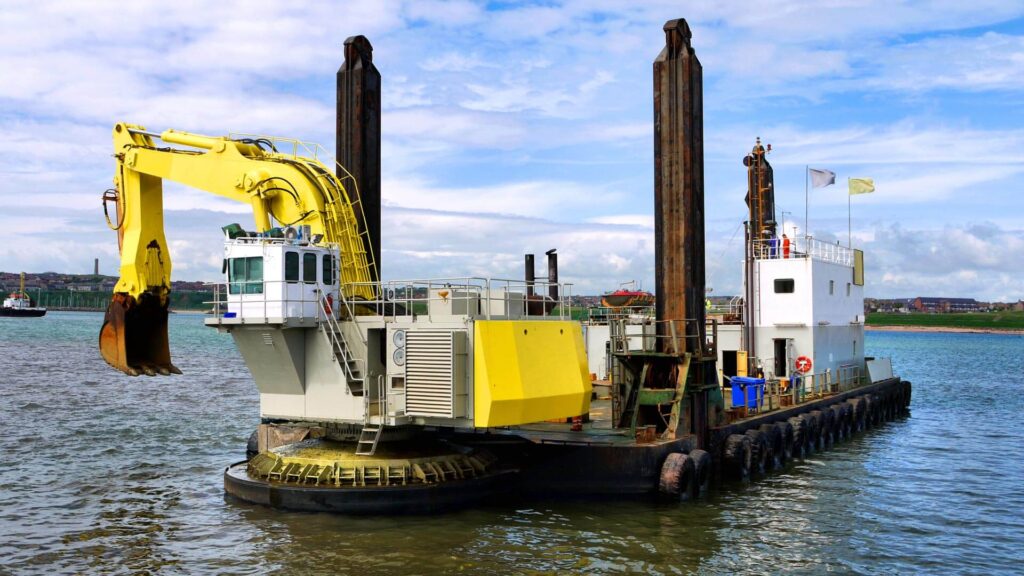
Marine dredging has evolved significantly over the years, with technological advancements improving efficiency, precision, and sustainability. These innovations are reshaping the way we dredge harbor marine environments, ensuring that projects are economically viable and environmentally responsible.
One key area of innovation is in dredging equipment. Modern dredgers are equipped with GPS and real-time monitoring systems, allowing operators to target specific areas with unmatched precision. This ensures that sediment removal is efficient and minimizes unnecessary disruption to surrounding habitats. Equipment like cutter suction dredgers and trailing suction hopper dredgers have been optimized for large-scale projects to dredge harbor marine areas, enabling faster operations with lower fuel consumption. These advancements reduce costs while also decreasing the environmental footprint of dredging activities.
Sustainable dredging techniques are another major development. For example, sediment removed during dredging is increasingly being repurposed for beneficial uses, such as creating wetlands, replenishing beaches, or building artificial reefs. This reduces the need for offshore disposal and supports ecological restoration efforts. Techniques like selective dredging, which removes only specific sediment layers, are being adopted in projects to dredge harbor marine environments to minimize environmental impact while maintaining navigability.
Eco-friendly practices are becoming standard in marine dredging operations. The use of electric or hybrid-powered dredgers reduces emissions, and innovations in sediment management are improving water quality during and after dredging activities. These technologies are critical for addressing the environmental concerns associated with dredging and ensuring compliance with stringent regulatory standards.
Looking ahead, the future of marine dredging lies in automation and artificial intelligence. Autonomous dredgers equipped with AI can operate with greater efficiency and precision, reducing the need for human intervention in hazardous conditions. Additionally, smart technologies are being developed to monitor the long-term impact of projects to dredge harbor marine environments, ensuring sustainable outcomes.
With these advancements, the marine dredging industry is well-positioned to meet the growing demands of port infrastructure development while protecting marine ecosystems. By embracing these technologies and sustainable practices, projects to dredge harbor marine areas will continue to play a vital role in global trade and environmental stewardship.
Conclusion
Marine dredging is an essential practice that supports the functionality and sustainability of ports worldwide. Maintaining and expanding navigational channels ensures the smooth operation of global trade while addressing critical environmental challenges. Projects to dredge harbor marine environments enhance port infrastructure and contribute to ecological preservation by restoring habitats, stabilizing shorelines, and managing sediment responsibly. This dual focus underscores the importance of marine dredging in balancing economic growth with environmental stewardship.
As the demand for larger ships and more efficient ports grows, the need for sustainable dredging practices becomes increasingly vital. Investing in innovative technologies and eco-friendly methods to dredge harbor marine environments can reduce environmental impact and promote long-term ecological health. Stakeholders, including governments, industries, and communities, must prioritize these sustainable approaches to ensure that dredging projects benefit both commerce and nature.
Looking ahead, marine dredging will continue to play a pivotal role in global trade and environmental management. By embracing advancements in technology and adopting sustainable practices, we can achieve efficient and environmentally responsible outcomes. Efforts to dredge harbor marine areas will remain integral to supporting the world’s economic infrastructure while safeguarding marine ecosystems for future generations. Together, these efforts drive a future where ports thrive in harmony with their natural surroundings.


